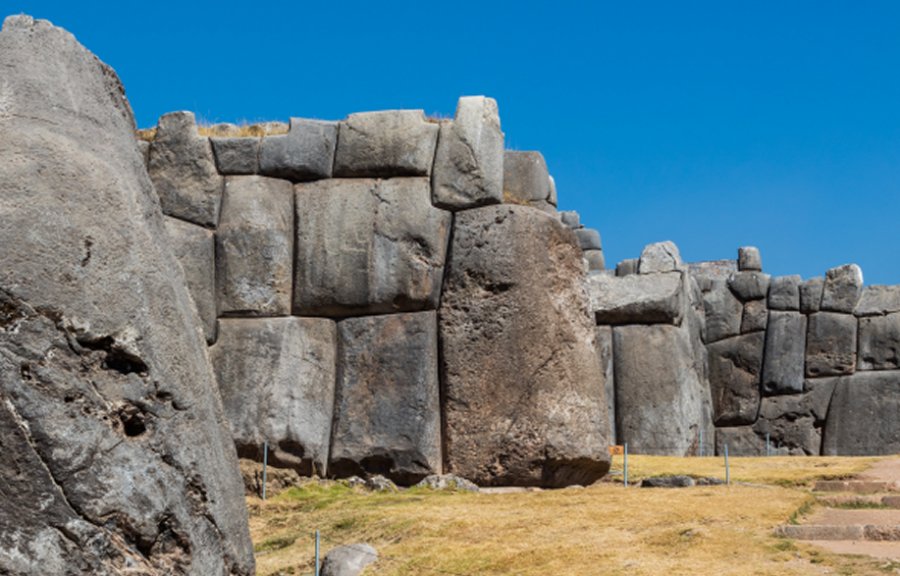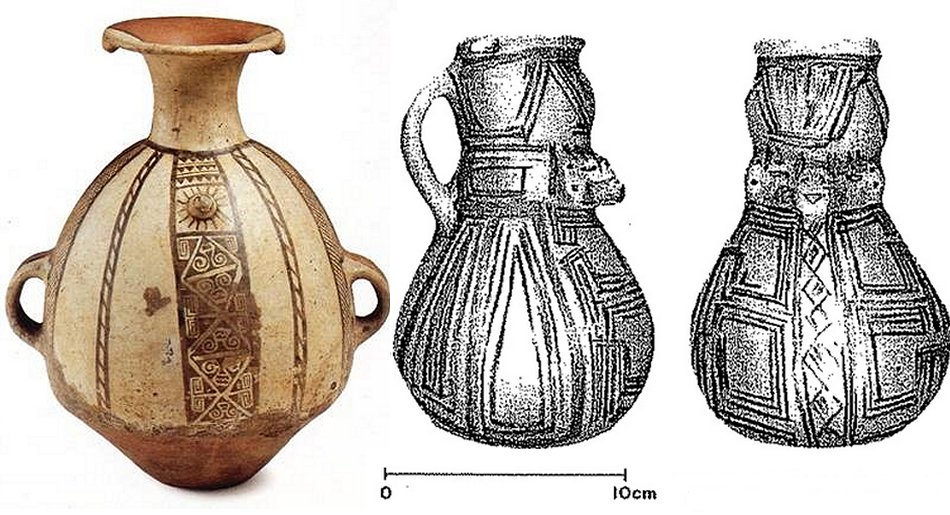Mysterious Killke Culture Of Peru: Did They Construct Sacsayhuaman?
A. Sutherland - AncientPages.com - Officially, the Killke culture (900 to 1200 AD) is credited for building Sacsayhuamán. However, Sacsayhuaman may still be hundreds or even thousands of years older than the Killke culture.
These people occupied the South American region around Cusco, Peru before the arrival of the Incas in the 13th century.
View of a row of corners of the walls of Saksaywaman, a citadel on the northern outskirts of the city of Cusco, the historic capital of the Inca Empire, today Peru. The first sections of the citadel were first built by the Killke culture about 1100 and expanded by the Inca from the 13th century. The dry stone walls are composed of huge stones, which boulders are carefully cut by workers to fit them together extremely tightly without mortar. Image Diego Delso - CC BY-SA 4.0
The Killke culture flourished during the Late Intermediate Period (approximately 1000 to 1470 AD) in what is now Cuzco, Peru.
It was Peru’s historical period characterized by crafts production, in which the Killke used semiprecious stones like turquoise and emeralds as well as wood, textiles, seashells. Their pottery also attested to their skills.
The pottery of the Killke people was often spherical with vertical strap handles and linear geometric decorations of black or black-on-red over a white or buff slip.
The Killke Culture And The Early Inca
The Killke people were skilled craftsmen. They built much of Cuzco that later became the capital of the powerful Inca empire. They are considered to be the so-called ‘early Inca’.
Left: Killke pottery style, found in Cuzco. Source; Right: Killke pottery examples (Bauer and Stanish 1990). Image source
Unfortunately very little is known about this period of time because neither the Killke people nor the Inca left any writings behind (they only had their famous ‘quipu’ records).
It is known, however, that many Killke settlements were later reused and further rebuilt by the Inca who arrived in the region.
Was Sacsayhuaman Constructed By Killke People?
They built the massive fortress, Sacsayhuamán, during the 12th century. Later, the fortress was used by the Inca, following their occupation of the region.
Could the Killke builders' skills be high enough to construct something such extraordinary as the massive fortress, Sacsayhuaman, which is officially dated to the 12th century?
Sacsayhuaman, located just outside of Cuzco, was a fortress of massive carved blocks of rock that fit flawlessly together. Researchers suggest that the original structure was built in the 1100s, which means three centuries earlier than Machu Picchu, by the Killke culture. They also believe that the Incas later made additions and suitable improvements to the original structures.
What remains today are mysterious long lines of rock, still at an unimaginable size for building. The stones are so huge that each one weighs about 107 metric tons.
Three gigantic, 1,500 feet long and 54 feet wide walls were erected near the city of Cuzco, Peru, at an altitude of over 3600 m (12,000 feet). The walls surround a paved area containing a circular stone structure that could be a solar calendar and other structures both on the surface and underground.
The structure was later used by the Inca, following their occupation of the region. It had both military and religious significance.
The 2007 – 2008 excavations uncovered a temple on the edge of the fortress, indicating religious as well as military use of the facility, and the ruins of two temples within the area of Sacsayhuamán, irrigation systems, and a roadway.
Sacsayhuaman Puzzle Is Far From Solved
“One problem we have with the archaeological record is that they seem to have a preconceived notion that the earliest culture in the Cuzco area, prior to the Inca, was the Killke. 2
The Killke occupied the region from 900 to 1200, prior to the arrival of the Inca. Carbon 14 dating of Sacsayhuamán, had demonstrated that the Killke culture constructed the fortress about 1100 AD. The Inca later expanded and occupied the complex in the 13th century and after.
Killke ceramics first were studied and described by John H. Rowe, (1918 - 2004), an American archaeologist and anthropologist, known for his extensive research on Peru, which focused especially on the Inca civilization. Rowe named the Killke culture while he studied Andean antiquity. However, he "incorrectly identified them as "early Inca". These vessels often are globular with vertical strap handles and have simple linear geometric decorations of black or black-on-red over a white or buff slip. 1
However, if the excavations were to proceed much deeper, evidence of earlier cultures could be present, says Brien Foerster in his book “Lost Ancient Technology Of Peru And Bolivia”.
Also, we have to remember what D. H. Childress wrote in his book “Ancient Technology in Peru and Bolivia”
“Sacsayhuaman may still be hundreds or even thousands of years older than the Killke culture. There seems to be no reason why building in the Cuzco and Sacsayhuaman area would have only begun in 1100 AD when the megalithic building had begun much earlier in other areas…” 3
Written by – A. Sutherland - AncientPages.com Senior Staff Writer
Copyright © AncientPages.com All rights reserved. This material may not be published, broadcast, rewritten or redistributed in whole or part without the express written permission of AncientPages.com
Expand for referencesReferences:
Project Gutenberg
D. H. Childress wrote in his book “Ancient Technology in Peru and Bolivia”
Brien Foerster, Lost Ancient Technology Of Peru And Bolivia
More From Ancient Pages
-
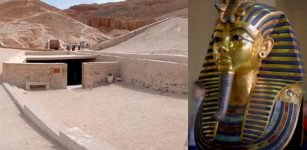 Radar Discovery Of Unknown Space Beyond Tutankhamun’s Burial Chamber May Lead To Queen Nefertiti’s Tomb
Archaeology | Feb 21, 2020
Radar Discovery Of Unknown Space Beyond Tutankhamun’s Burial Chamber May Lead To Queen Nefertiti’s Tomb
Archaeology | Feb 21, 2020 -
 4000-Year-Old Large Bronze Age Cemetery Discovered In Lower Silesia, Poland
Civilizations | Sep 21, 2015
4000-Year-Old Large Bronze Age Cemetery Discovered In Lower Silesia, Poland
Civilizations | Sep 21, 2015 -
 Ancient Secrets Of The Damascus Steel – Legendary Metal Used By Crusaders And Other Warriors
Artifacts | May 28, 2020
Ancient Secrets Of The Damascus Steel – Legendary Metal Used By Crusaders And Other Warriors
Artifacts | May 28, 2020 -
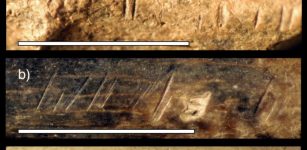 Humans’ Evolutionary Relatives Butchered One Another 1.45 Million Years Ago
Ancient Symbols | Jun 26, 2023
Humans’ Evolutionary Relatives Butchered One Another 1.45 Million Years Ago
Ancient Symbols | Jun 26, 2023 -
 Rocket Launch Into Space At Sibiu, Romania Took Place In 1555 – Sibiu Manuscript
Ancient Mysteries | May 29, 2014
Rocket Launch Into Space At Sibiu, Romania Took Place In 1555 – Sibiu Manuscript
Ancient Mysteries | May 29, 2014 -
 Ancient Jericho – City Of Giants And Home Of The Mighty Gibborim
Biblical Mysteries | Jun 28, 2017
Ancient Jericho – City Of Giants And Home Of The Mighty Gibborim
Biblical Mysteries | Jun 28, 2017 -
 Nefertum – God Of Lotus Blossom, Perfumes, Aromatherapy, Beauty In Egyptian Mythology
Featured Stories | Apr 17, 2021
Nefertum – God Of Lotus Blossom, Perfumes, Aromatherapy, Beauty In Egyptian Mythology
Featured Stories | Apr 17, 2021 -
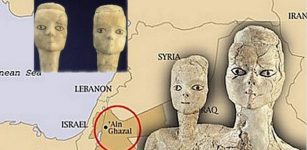 Stone Age Statues Were Taken To Britain For Restoration In 1990 – Never Returned Home To Jordan
News | Apr 6, 2021
Stone Age Statues Were Taken To Britain For Restoration In 1990 – Never Returned Home To Jordan
News | Apr 6, 2021 -
 The Great Pyramid And Ancient Egyptian Knowledge Shed Light On Biblical Mysteries – Resurrection Of The Flesh – Part 1
Ancient Mysteries | Nov 25, 2019
The Great Pyramid And Ancient Egyptian Knowledge Shed Light On Biblical Mysteries – Resurrection Of The Flesh – Part 1
Ancient Mysteries | Nov 25, 2019 -
 Mystery Of Ancient Language PIE From Which Half Of All Languages Originate
Featured Stories | Apr 3, 2017
Mystery Of Ancient Language PIE From Which Half Of All Languages Originate
Featured Stories | Apr 3, 2017 -
 Ancient Greeks Regret Inventing The Theater – But Why?
Ancient History Facts | Jul 26, 2018
Ancient Greeks Regret Inventing The Theater – But Why?
Ancient History Facts | Jul 26, 2018 -
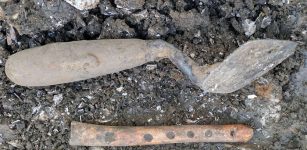 Fascinating 3,000-Year-Old Artifacts Found At Herne Bay, Kent, UK
Archaeology | Jun 24, 2022
Fascinating 3,000-Year-Old Artifacts Found At Herne Bay, Kent, UK
Archaeology | Jun 24, 2022 -
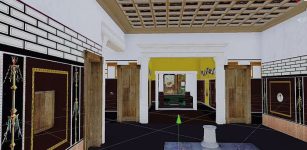 A Unique Look Inside An Ancient Home In Pompeii Re-Constructed With Virtual Reality
News | Mar 26, 2022
A Unique Look Inside An Ancient Home In Pompeii Re-Constructed With Virtual Reality
News | Mar 26, 2022 -
 Legend Of The Blue Men Of Minch: Were They Mythological Creatures Or Real Men?
Featured Stories | May 13, 2016
Legend Of The Blue Men Of Minch: Were They Mythological Creatures Or Real Men?
Featured Stories | May 13, 2016 -
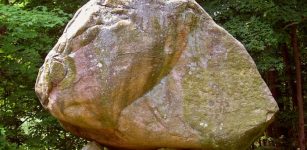 Mystery Of The Giant Boulder In North Salem
Featured Stories | Aug 8, 2019
Mystery Of The Giant Boulder In North Salem
Featured Stories | Aug 8, 2019 -
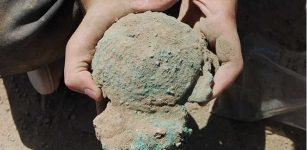 Rare Discovery Of 4,300-Year-Old Copper Ingots Left By Mistake In A Settlement In Oman
Archaeology | Jun 2, 2023
Rare Discovery Of 4,300-Year-Old Copper Ingots Left By Mistake In A Settlement In Oman
Archaeology | Jun 2, 2023 -
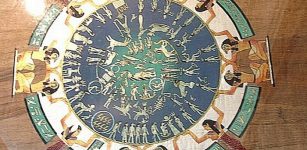 Ancient Papyrus Reveals Millennia Old Astronomical Secret: The ‘Demon Star’ Algol Does Exist
Civilizations | Aug 23, 2015
Ancient Papyrus Reveals Millennia Old Astronomical Secret: The ‘Demon Star’ Algol Does Exist
Civilizations | Aug 23, 2015 -
 When Did Humans Start Using Roads And What Civilization Built The First Paved Roads?
Archaeology | Oct 26, 2022
When Did Humans Start Using Roads And What Civilization Built The First Paved Roads?
Archaeology | Oct 26, 2022 -
 Unexplained Dangerous Secret In The Great Smoky Mountains
Featured Stories | Apr 20, 2024
Unexplained Dangerous Secret In The Great Smoky Mountains
Featured Stories | Apr 20, 2024 -
 Peculiar Ancient Stone Disk Could Be World’s Oldest Celestial Map
Archaeology | Jan 3, 2024
Peculiar Ancient Stone Disk Could Be World’s Oldest Celestial Map
Archaeology | Jan 3, 2024

